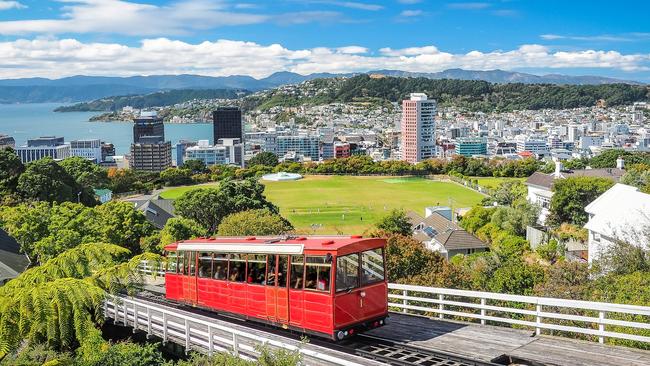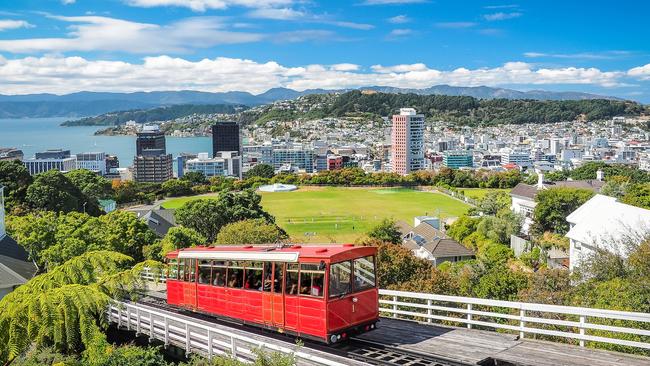New Zealand lays out our interest rate future
If you want to see where Australian interest rates are heading just look across the pond to New Zealand where property prices have already retreated 9.2 per cent.

Terry McCrann
Don't miss out on the headlines from Terry McCrann. Followed categories will be added to My News.
Interest rates. If you want to see the future – of higher rates and what they might do to property prices and the economy – look around 2200km east, across the Tasman.
The New Zealand Reserve Bank started raising its official rate much earlier than our RBA.
Indeed, it’s been easily the most aggressive of any central bank.
The RBNZ made its first hike all the way back last October.
By the time our RBA made its first hike, fully seven months later in May, the RBNZ had already made four hikes that added up to 125 points.
It then hiked a further 50 points at its last meeting in late-May to take the rate to 2 per cent.
Our rate is now 85 points – that’s 0.85 per cent – but it will be increased at the RBA’s meeting next week.
On the surface, the RBNZ started hiking earlier because inflation started rising earlier in NZ.
In the year to the September 2021 quarter, NZ inflation was 4.9 per cent; ours was only 3 per cent.
But that was largely due to the lockdowns in our two biggest states NSW and Victoria temporarily suppressing price rises, as I explained at the time.
As we came out of the lockdowns, inflation took off – all, well before Russia’s attack on Ukraine which sent oil, gas and food prices rocketing.
In the December quarter it was 1.3 per cent, making 3.5 per cent for the year.
Then in the March quarter it leapt to 2.1 per cent, making that now infamous 5.1 per cent for the year.

I say ‘infamous’ because 5.1 per cent has become – not exactly surprisingly or indeed unreasonably - the absolute pivot of wage demands.
But if we do see 5.1 per cent wage rises generally across the economy, that would tip us into exactly the disastrous wage-price spiral which would force the RBA to hike its rate far higher than it intends.
In NZ the rate hikes have hit the property market.
The NZ Real Estate Institute a week back reported property prices down 9.2 per cent since the rate hikes started in October.
So far in Australia, we have seen property prices going sideways compared with a year ago, but then the first rate hike was less than two months ago and was only 25 points.
It’s depressingly important to note that rate hikes would – will– impact the property market much faster on this side of the Tasman, because the great majority of loans here are variable rate loans.
In NZ they tend to be fixed rate for short-terms.; so the impact on NZ borrowers – and property prices - of the rate hikes will really start to bite through 2023.
That will be our future in real time.
The earlier NZ hikes might seem to have hit the economy harder and faster.
The NZ economy actually shrank by 0.2 per cent in the March quarter; while ours grew by 0.8 per cent.
But NZ had a booming December quarter and over the year its 5.1 per cent growth rate was much higher than our 3.3 per cent.
Once again, NZ’s growth reality in this June quarter figures will be a telling pointer to what lies ahead for Australia in the post-rate hike second half of the year.
Right now, Wall St is betting that US rate hikes won’t be anywhere near what the Fed had been interpreted as predicting; and this ‘optimism’ has sparked the share market surge.
Clearly, the similar ‘expectations’ that the RBA would deliver hikes adding to over 3 per cent had been running way, way ahead of any understanding of the RBA and of indeed basic reality.
Now that it’s ‘woke’, the RBA really will take it month-to-month, both in how high it goes and how quickly- albeit, with next week locked in at either 25 or 50 points.
The two biggest influences on the RBA’s decision-making through 2022 remain what the Fed does – in its kowtowing interplays with Wall St - and what happens and, again, how quickly to local wages.
Originally published as New Zealand lays out our interest rate future


